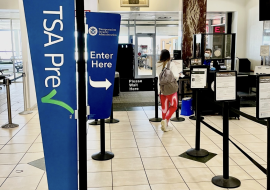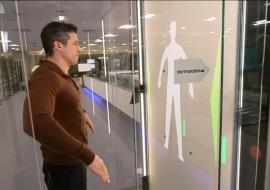Urban Air Mobility Market to Reach $29 Billion by 2030

As per the report published by The Brainy Insights, the global urban air mobility market is expected to grow from USD 2.1 billion in 2021 to USD 29.0 billion by 2030, at a CAGR of 33.9% during the forecast period 2022-2030.
Urban air mobility (UAM) is a highly automated, on-demand, unpiloted, cargo or passenger-carrying air transportation service. The concept of transportation has made city travel easier by avoiding traffic jams and congestion on roads. These vehicles help transport one to two passengers and small packages in less time. Furthermore, urban air mobility vehicles are helpful in emergency medical evacuations, rescue operations, humanitarian missions, ground traffic flow assessment, and many others.
The increasing congestion on the roads, especially in urban areas during peak hours, resulted in consumers spending more time on the streets. According to the American bar association, the US, Germany, the UK, and France, combined spent USD 200 billion on solving traffic jam congestion. This amount can continue increasing if the traffic congestion problem is not solved on time.
Competitive Strategy
To enhance their market position in the global urban air mobility market, the key players are now focusing on adopting the strategies such as product innovations, mergers & acquisitions, recent developments, joint ventures, collaborations, and partnerships.
- In June 2021, American Airlines announced its investment in vertical aerospace, a leading UK-headquartered engineering and aeronautical business that helps develop electrically-propelled vertical-takeoff-and-landing aircraft (eVTOL). The main aim of this investment is to reduce carbon emissions and improve transport facilities for consumers.
Market Growth & Trends
The increasing traffic congestion issues, mostly in urban areas with a large population, propel the need for faster modes of intracity transportation, driving the growth of the urban air mobility market. However, this mode of transport seems to be accepted mainly by the younger generation and wealthier people. However, the metropolitan areas are still unwilling to bring this to function, hindering the market's growth. Many investments have been made to research and develop urban air mobility vehicles, providing an opportunity for market growth during the forecast period. Advancement in aviation technologies such as the integration of IoT and Artificial intelligence is creating the potential to provide convenient, efficient on-demand transportation for people and cargo, which is also expected to provide an opportunity for the market's growth during the forecast period.
Key Findings
- In 2021, the air taxis segment dominated the market with the largest market share of 29% and market revenue of 0.6 billion.
The vehicle type segment is divided into air taxis, air ambulances, air metro, last-mile delivery, and others. In 2021, the air taxi segment dominated the market with the largest market share of 29% and market revenue of 0.6 billion. Air taxis are equipped with highly efficient batteries and sophisticated manufacturing design, driving the segment's growth.
- In 2021, the intercity segment accounted for the largest share of the market, with 72% and market revenue of 1.51 billion.
The range segment is divided into intercity and intracity. In 2021, the intercity segment accounted for the largest market share, with 72% and market revenue of 1.51 billion. Intercity vehicles can carry 2 to 4 persons at a time and a load of 20 to 40kg of hand luggage for a shorter distance ranging from 50km to 250km, which fuels the segment's growth.
- In 2021, the autonomous segment accounted for the largest share of the market, with 39% and market revenue of 0.8 billion.
The operation segment is divided into piloted, hybrid, and autonomous. In 2021, the autonomous segment accounted for the largest market share, with 39% and market revenue of 0.8 billion. Autonomous urban air mobility vehicles help eliminate the chances of human error, which drives the segment's growth.














